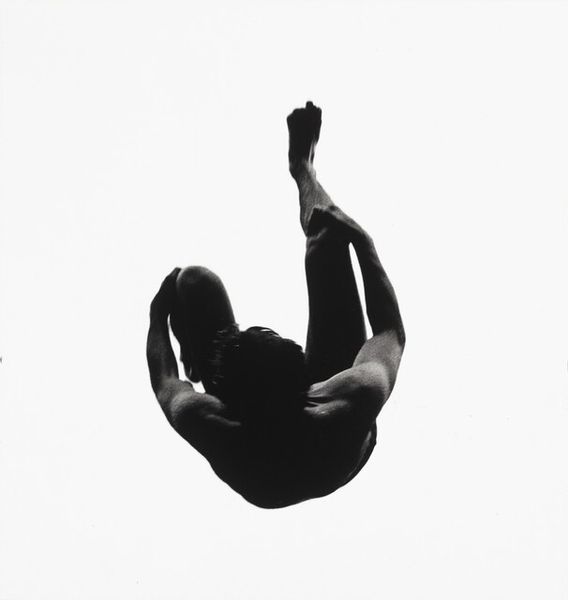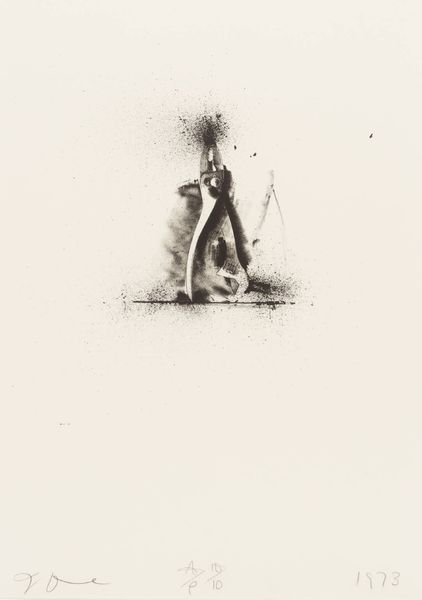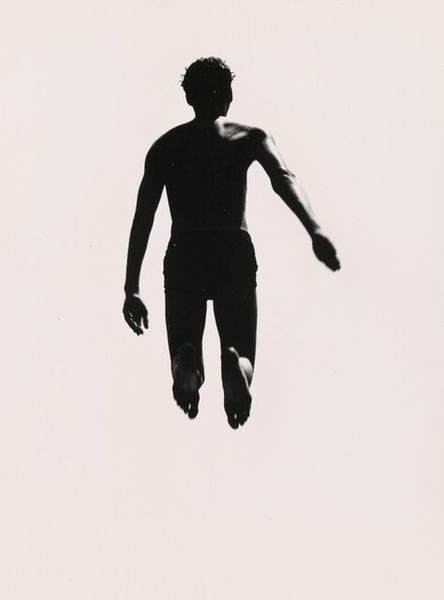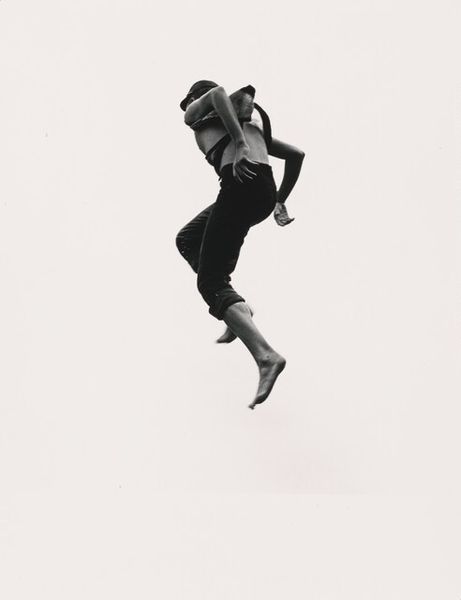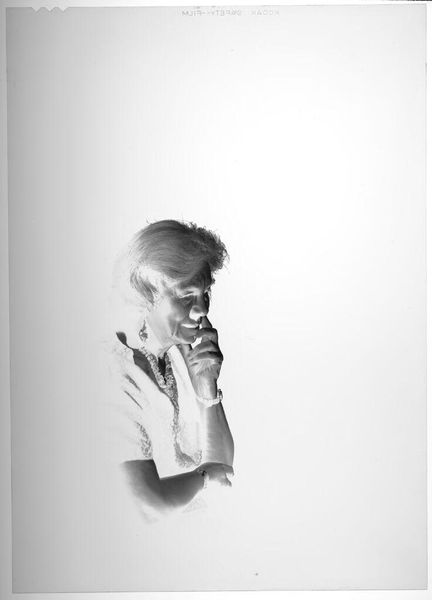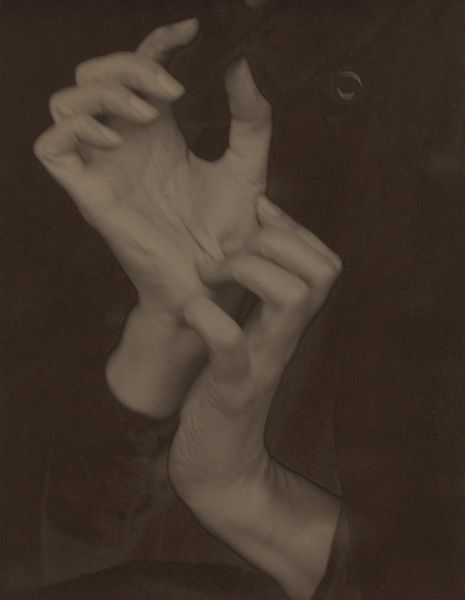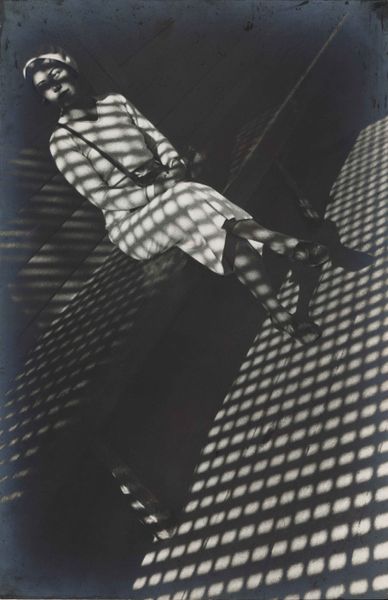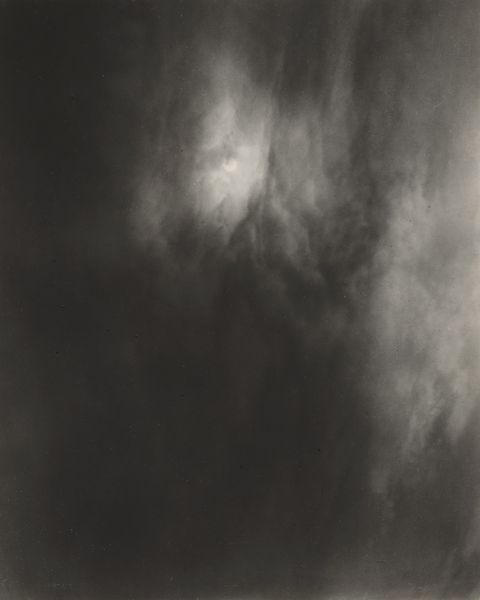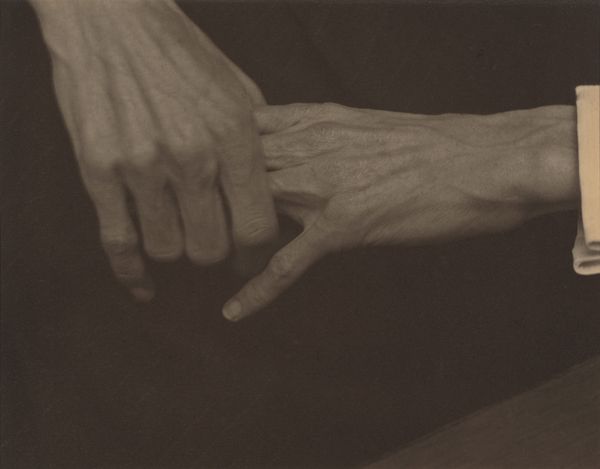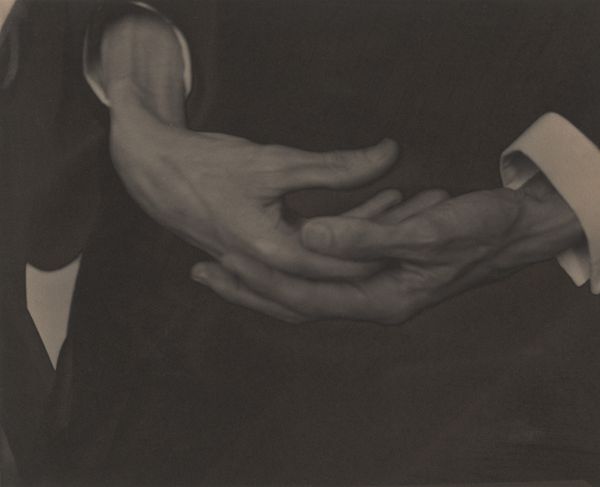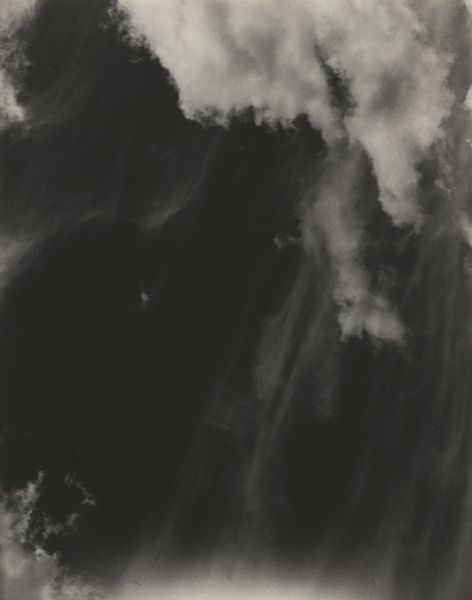
photography, gelatin-silver-print
#
abstract-expressionism
#
figuration
#
photography
#
gelatin-silver-print
#
monochrome photography
#
abstraction
#
white background
#
monochrome
#
nude
#
monochrome
Dimensions: image: 32.5 × 26.1 cm (12 13/16 × 10 1/4 in.) sheet: 35.3 × 27.6 cm (13 7/8 × 10 7/8 in.)
Copyright: National Gallery of Art: CC0 1.0
Curator: Aaron Siskind's gelatin-silver print, "Pleasures and Terrors of Levitation #51," created in 1957, immediately strikes one as quite stark and, perhaps, disorienting. What’s your first impression? Editor: The starkness is definitely palpable. There's a raw, vulnerable energy. The solitary figure, isolated against that blank expanse, almost seems suspended between liberation and some kind of freefall... a questioning of balance, really. Curator: Balance is key to the formal dynamic. The high contrast renders the body almost sculptural, accentuating the interplay of light and shadow across the curvature. The composition isolates the subject. Note, the focus on texture transforms human skin into an almost abstract topography. Editor: True, yet I'm also reading the image as a commentary on bodily autonomy within social constraints. The inverted position might be symbolizing a radical subversion of norms—the deliberate choice to defy gravity is a metaphor for breaking free from societal expectations, perhaps even escaping the male gaze, claiming it on their own terms? Curator: While that's an interesting interpretation, it runs the risk of overemphasizing the contextual elements at the expense of the formal strategy. I mean, doesn't the lack of any concrete contextual cues – the stark, minimalist composition – redirect our focus specifically towards the pure act of seeing, and on our aesthetic apprehension of form itself? Editor: But isn’t the body always already political? The very act of representation, particularly in stark monochrome like this, forces a viewer to confront their own positionality. Who has the privilege to take up space, to be seen? That kind of hypervisibility can carry profound social implications for historically marginalized people. Curator: An important point. Perhaps, in the end, it's the synthesis of form and context, the tangible and the interpretative that enables this photograph to transcend its historical moment, speaking both to abstract aesthetic principles, and to deeply resonant questions of selfhood, power, and liberation that still hold great relevance today. Editor: Precisely. A truly compelling photograph; where the pleasures and the terrors are intricately connected to the embodied experience in our cultural climate.
Comments
No comments
Be the first to comment and join the conversation on the ultimate creative platform.
